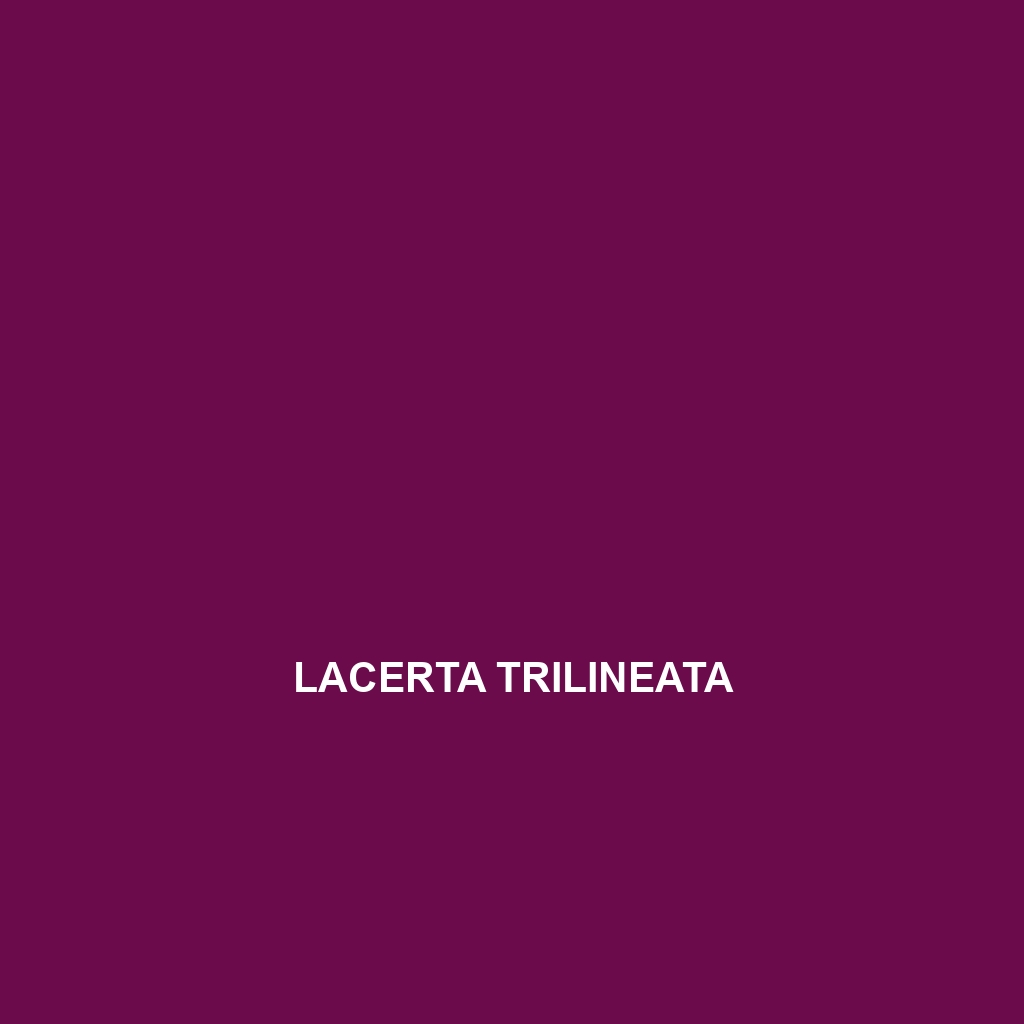Common Name
Lacerta trilineata
Scientific Name
Lacerta trilineata
Habitat
Lacerta trilineata, commonly known as the three-lined lizard, is primarily found in a variety of habitats across southern Europe and parts of North Africa. These lizards thrive in environments ranging from temperate forests to savannas and are often spotted in rocky areas or grasslands where sunlight is abundant. They prefer areas with scattered vegetation that provides cover from predators, as well as clear patches for basking. The climate in these regions is generally mild, with warm summers and cool winters, allowing Lacerta trilineata to be active during the warmer months while retreating to cooler shelters during colder days.
Physical Characteristics
The Lacerta trilineata typically measures about 20 to 30 centimeters in length, featuring a slender body that is well-adapted for swift movement. Its coloration varies but generally includes a distinctive three-lined pattern on its back, consisting of bright green, brown, or grey scales. This coloration serves as an effective camouflage in its natural habitat. The lizard possesses long limbs that enable it to climb and navigate through rocky terrains easily. Additionally, its tail can be easily shed as a defense mechanism against predators, allowing it to escape while the discarded tail distracts the attacker.
Behavior
Lacerta trilineata exhibits both diurnal and some nocturnal behaviors, primarily being active during the day. They are territorial creatures, often seen defending their space against other lizards through displays of aggression and posturing. Mating rituals are intricate; males engage in elaborate courtship displays that include colorful displays and head-bobbing to attract females. These lizards are not migratory; however, they may relocate to find food or more favorable environmental conditions during seasonal changes. Social interactions are typically limited to mating and territorial disputes.
Diet
The Lacerta trilineata is an insectivore, primarily feeding on a variety of insects, including crickets, grasshoppers, and beetles. This lizard plays a crucial role in controlling insect populations in its ecosystem. During the warmer months, they may also consume plant matter, which classifies them as partially omnivorous. Their feeding patterns are opportunistic; they hunt primarily during daylight hours, using their keen vision to spot prey from a distance. The diet may vary based on seasonal availability, with these lizards adapting to their environment to find sufficient food sources.
Reproduction
Mating season for Lacerta trilineata typically occurs in late spring when males become more vocal and active in their displays to attract females. After a courtship period, which involves territorial displays, females lay clutches of 6 to 14 eggs in hidden locations such as under rocks or in soft soil. The gestation period lasts around 30 to 50 days, depending on environmental conditions. Hatchlings are born independently, receiving no parental care after their eggs are laid. Young lizards are miniature versions of adults and quickly integrate into their habitats, relying on their innate instincts for survival.
Conservation Status
As per the latest assessments, Lacerta trilineata is classified as least concern on the IUCN Red List, indicating a stable population in its natural habitat. However, local populations may face threats due to habitat loss, urbanization, and agricultural expansion. Conservation efforts primarily focus on habitat protection and research on their ecology to ensure sustainable populations. Awareness and education about the importance of this species in the ecosystem can also enhance conservation strategies.
Interesting Facts
The Lacerta trilineata exhibits unique behaviors such as “autotomy,” the ability to shed its tail when threatened, which can regrow later. This adaptation serves as an effective survival strategy against predators. Additionally, during the mating season, males can display bright colors—especially in direct sunlight—alerting females of their fitness. Another interesting fact is that these lizards utilize their long tongues to catch insects quickly, showcasing their agility and precision as predators in their ecological niche.
Role in Ecosystem
The ecological role of Lacerta trilineata is significant, as they act as both predator and prey within their habitats. By feeding on insects, they help to maintain balanced populations, preventing outbreaks that could disrupt local ecosystems. Conversely, they serve as a food source for larger predators, including birds of prey and mammals. As a part of the food web, the three-lined lizard contributes to the health and stability of the environments they inhabit. Overall, maintaining healthy populations of Lacerta trilineata is essential for sustaining the biodiversity of their ecosystems.
